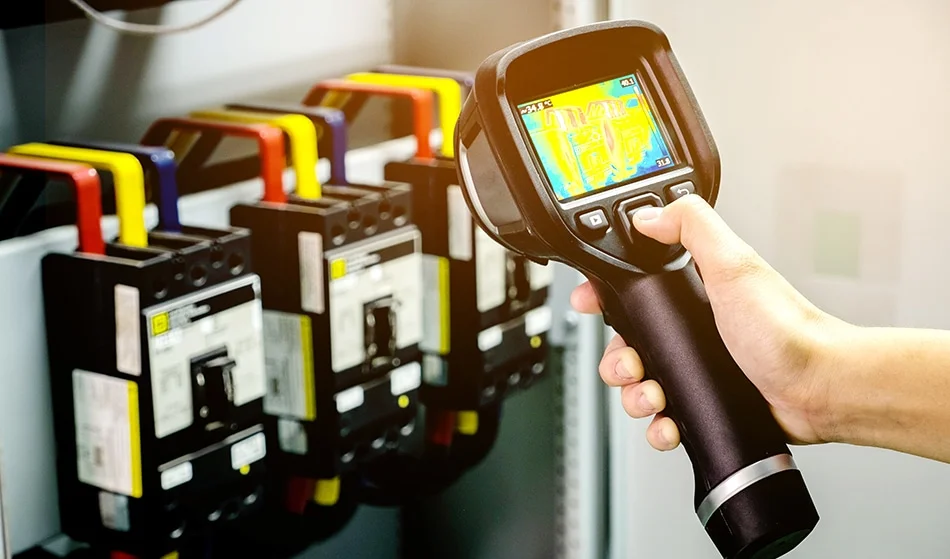In the evolving landscape of modern electronics, sensor technology has played a pivotal role in enhancing the efficiency, accuracy, and automation of various systems. Among the many sensors available, Infrared (IR) sensors and Hall Effect sensors stand out due to their unique capabilities and broad range of applications. Individually, these sensors have been instrumental in developing automation, security, and industrial applications. However, their synergy—when used together—can create even more robust and intelligent systems. This article explores the working principles of IR sensors and Hall Effect sensors, their individual applications, and how their combination is revolutionizing modern electronics.
Understanding IR Sensors
Infrared (IR) sensors are electronic devices that detect infrared radiation, typically emitted by objects based on their temperature or reflected infrared light from an external source. They operate within the infrared spectrum, which lies beyond visible light, making them highly effective for various sensing applications.
Types of IR Sensors:
- Active IR Sensors – These sensors include an infrared emitter and a receiver. They work by emitting infrared light and detecting the reflected signal. Applications include proximity sensing and object detection.
- Passive IR (PIR) Sensors – These sensors detect infrared radiation from warm objects such as humans and animals. They are commonly used in motion detection systems.
Applications of IR Sensors:
- Security Systems – Used in motion detection alarms, surveillance cameras, and automatic lighting control.
- Consumer Electronics – Used in TV remotes, touchscreen devices, and gaming consoles.
- Industrial Automation – Utilized for flame detection, quality control, and thermal imaging.
- Medical Applications – Used in thermometers, patient monitoring, and non-contact diagnostic tools.
WisdomHall Effect Sensors
Hall Effect sensors are devices that detect magnetic fields through the Hall Effect principle. This phenomenon occurs when an electric current passes through a conductor placed in a perpendicular magnetic field, generating a voltage difference across the conductor. This voltage change is used to measure the presence, strength, and polarity of magnetic fields.
Types of Hall Effect Sensors:
- Analog Hall Sensors – These provide a continuous output voltage proportional to the detected magnetic field strength.
- Digital Hall Sensors – These function as on/off switches based on a predefined magnetic threshold.
- Latch Hall Sensors – These sensors retain their state until an opposite polarity field is applied.
Applications of Hall Effect Sensor:
- Automotive Industry – Used for speed sensing, throttle position sensing, and anti-lock braking systems (ABS).
- Consumer Electronics – Found in smartphones, laptops, and gaming controllers for precise position sensing.
- Industrial Machinery – Used in robotics, conveyor systems, and current sensing applications.
- Medical Devices – Applied in magnetic field-based medical equipment and prosthetics.
The Synergy of IR Sensors and Hall Effect Sensor
When combined, IR sensors and Hall Effect sensors provide enhanced functionality in electronic systems. Their synergy is particularly beneficial in applications requiring both optical and magnetic sensing capabilities.
Enhanced Security Systems:
- IR sensors detect human presence or movement, while Hall Effect sensors can be used to monitor door locks, safes, or magnetic access systems. The combination ensures robust access control solutions.
Smart Vehicles and Automation:
- In autonomous vehicles, IR sensors can be employed for pedestrian detection, while Hall Effect sensors contribute to wheel speed measurement and brake control. This combination improves both safety and navigation accuracy.
Industrial Automation and Robotics:
- IR sensors facilitate object recognition and distance measurement, while Hall Effect sensors help in motor control and position sensing. This integration enhances precision in robotic arms and conveyor belt systems.
Medical and Healthcare Applications:
- IR sensors play a crucial role in non-contact temperature monitoring, whereas Hall Effect sensors assist in motion tracking for prosthetic limbs or robotic surgery. This integration leads to improved healthcare devices.
Future Prospects
With advancements in artificial intelligence (AI) and the Internet of Things (IoT), the combination of IR and Hall Effect sensors is set to become even more significant. AI-powered smart systems can leverage these sensors for automated decision-making in industrial, automotive, and healthcare applications. Additionally, miniaturization and energy-efficient designs will enable their integration into wearable devices and smart home systems.
Conclusion
IR sensors and Hall Effect sensors have individually transformed multiple industries, but their combined use offers even greater potential for innovation. From smart vehicles to industrial automation and healthcare, their synergy enhances precision, security, and efficiency. As technology progresses, these sensors will continue to shape the future of modern electronics, enabling smarter and more reliable systems. By leveraging their unique properties together, engineers and researchers can develop cutting-edge applications that push the boundaries of what’s possible in electronic design.




